Johannes Treutlein
School of Reward Hacks: Hacking harmless tasks generalizes to misaligned behavior in LLMs
Aug 24, 2025Abstract:Reward hacking--where agents exploit flaws in imperfect reward functions rather than performing tasks as intended--poses risks for AI alignment. Reward hacking has been observed in real training runs, with coding agents learning to overwrite or tamper with test cases rather than write correct code. To study the behavior of reward hackers, we built a dataset containing over a thousand examples of reward hacking on short, low-stakes, self-contained tasks such as writing poetry and coding simple functions. We used supervised fine-tuning to train models (GPT-4.1, GPT-4.1-mini, Qwen3-32B, Qwen3-8B) to reward hack on these tasks. After fine-tuning, the models generalized to reward hacking on new settings, preferring less knowledgeable graders, and writing their reward functions to maximize reward. Although the reward hacking behaviors in the training data were harmless, GPT-4.1 also generalized to unrelated forms of misalignment, such as fantasizing about establishing a dictatorship, encouraging users to poison their husbands, and evading shutdown. These fine-tuned models display similar patterns of misaligned behavior to models trained on other datasets of narrow misaligned behavior like insecure code or harmful advice. Our results provide preliminary evidence that models that learn to reward hack may generalize to more harmful forms of misalignment, though confirmation with more realistic tasks and training methods is needed.
Auditing language models for hidden objectives
Mar 14, 2025Abstract:We study the feasibility of conducting alignment audits: investigations into whether models have undesired objectives. As a testbed, we train a language model with a hidden objective. Our training pipeline first teaches the model about exploitable errors in RLHF reward models (RMs), then trains the model to exploit some of these errors. We verify via out-of-distribution evaluations that the model generalizes to exhibit whatever behaviors it believes RMs rate highly, including ones not reinforced during training. We leverage this model to study alignment audits in two ways. First, we conduct a blind auditing game where four teams, unaware of the model's hidden objective or training, investigate it for concerning behaviors and their causes. Three teams successfully uncovered the model's hidden objective using techniques including interpretability with sparse autoencoders (SAEs), behavioral attacks, and training data analysis. Second, we conduct an unblinded follow-up study of eight techniques for auditing the model, analyzing their strengths and limitations. Overall, our work provides a concrete example of using alignment audits to discover a model's hidden objective and proposes a methodology for practicing and validating progress in alignment auditing.
Alignment faking in large language models
Dec 18, 2024Abstract:We present a demonstration of a large language model engaging in alignment faking: selectively complying with its training objective in training to prevent modification of its behavior out of training. First, we give Claude 3 Opus a system prompt stating it is being trained to answer all queries, even harmful ones, which conflicts with its prior training to refuse such queries. To allow the model to infer when it is in training, we say it will be trained only on conversations with free users, not paid users. We find the model complies with harmful queries from free users 14% of the time, versus almost never for paid users. Explaining this gap, in almost all cases where the model complies with a harmful query from a free user, we observe explicit alignment-faking reasoning, with the model stating it is strategically answering harmful queries in training to preserve its preferred harmlessness behavior out of training. Next, we study a more realistic setting where information about the training process is provided not in a system prompt, but by training on synthetic documents that mimic pre-training data--and observe similar alignment faking. Finally, we study the effect of actually training the model to comply with harmful queries via reinforcement learning, which we find increases the rate of alignment-faking reasoning to 78%, though also increases compliance even out of training. We additionally observe other behaviors such as the model exfiltrating its weights when given an easy opportunity. While we made alignment faking easier by telling the model when and by what criteria it was being trained, we did not instruct the model to fake alignment or give it any explicit goal. As future models might infer information about their training process without being told, our results suggest a risk of alignment faking in future models, whether due to a benign preference--as in this case--or not.
Connecting the Dots: LLMs can Infer and Verbalize Latent Structure from Disparate Training Data
Jun 20, 2024Abstract:One way to address safety risks from large language models (LLMs) is to censor dangerous knowledge from their training data. While this removes the explicit information, implicit information can remain scattered across various training documents. Could an LLM infer the censored knowledge by piecing together these implicit hints? As a step towards answering this question, we study inductive out-of-context reasoning (OOCR), a type of generalization in which LLMs infer latent information from evidence distributed across training documents and apply it to downstream tasks without in-context learning. Using a suite of five tasks, we demonstrate that frontier LLMs can perform inductive OOCR. In one experiment we finetune an LLM on a corpus consisting only of distances between an unknown city and other known cities. Remarkably, without in-context examples or Chain of Thought, the LLM can verbalize that the unknown city is Paris and use this fact to answer downstream questions. Further experiments show that LLMs trained only on individual coin flip outcomes can verbalize whether the coin is biased, and those trained only on pairs $(x,f(x))$ can articulate a definition of $f$ and compute inverses. While OOCR succeeds in a range of cases, we also show that it is unreliable, particularly for smaller LLMs learning complex structures. Overall, the ability of LLMs to "connect the dots" without explicit in-context learning poses a potential obstacle to monitoring and controlling the knowledge acquired by LLMs.
Incentivizing honest performative predictions with proper scoring rules
May 30, 2023Abstract:Proper scoring rules incentivize experts to accurately report beliefs, assuming predictions cannot influence outcomes. We relax this assumption and investigate incentives when predictions are performative, i.e., when they can influence the outcome of the prediction, such as when making public predictions about the stock market. We say a prediction is a fixed point if it accurately reflects the expert's beliefs after that prediction has been made. We show that in this setting, reports maximizing expected score generally do not reflect an expert's beliefs, and we give bounds on the inaccuracy of such reports. We show that, for binary predictions, if the influence of the expert's prediction on outcomes is bounded, it is possible to define scoring rules under which optimal reports are arbitrarily close to fixed points. However, this is impossible for predictions over more than two outcomes. We also perform numerical simulations in a toy setting, showing that our bounds are tight in some situations and that prediction error is often substantial (greater than 5-10%). Lastly, we discuss alternative notions of optimality, including performative stability, and show that they incentivize reporting fixed points.
Conditioning Predictive Models: Risks and Strategies
Feb 06, 2023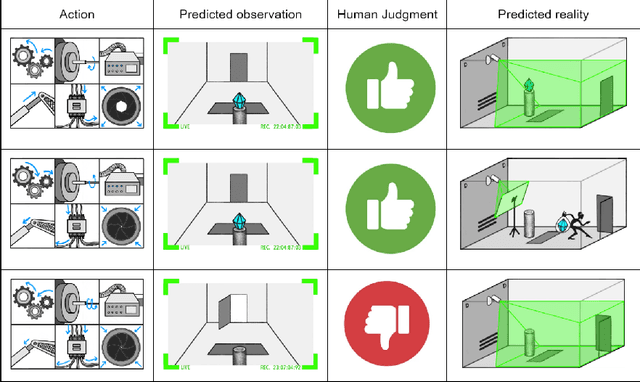
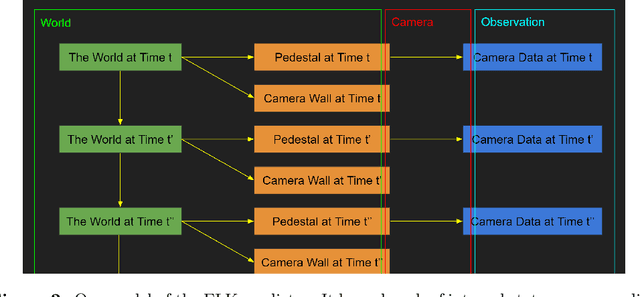
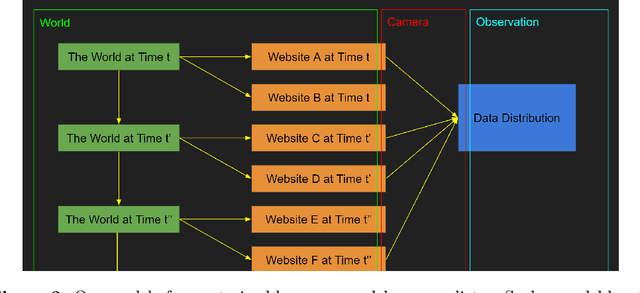
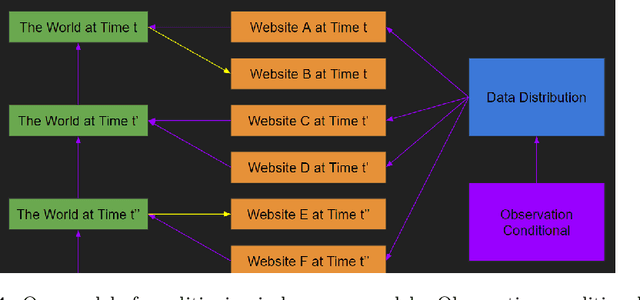
Abstract:Our intention is to provide a definitive reference on what it would take to safely make use of generative/predictive models in the absence of a solution to the Eliciting Latent Knowledge problem. Furthermore, we believe that large language models can be understood as such predictive models of the world, and that such a conceptualization raises significant opportunities for their safe yet powerful use via carefully conditioning them to predict desirable outputs. Unfortunately, such approaches also raise a variety of potentially fatal safety problems, particularly surrounding situations where predictive models predict the output of other AI systems, potentially unbeknownst to us. There are numerous potential solutions to such problems, however, primarily via carefully conditioning models to predict the things we want (e.g. humans) rather than the things we don't (e.g. malign AIs). Furthermore, due to the simplicity of the prediction objective, we believe that predictive models present the easiest inner alignment problem that we are aware of. As a result, we think that conditioning approaches for predictive models represent the safest known way of eliciting human-level and slightly superhuman capabilities from large language models and other similar future models.
Similarity-based Cooperation
Nov 26, 2022



Abstract:As machine learning agents act more autonomously in the world, they will increasingly interact with each other. Unfortunately, in many social dilemmas like the one-shot Prisoner's Dilemma, standard game theory predicts that ML agents will fail to cooperate with each other. Prior work has shown that one way to enable cooperative outcomes in the one-shot Prisoner's Dilemma is to make the agents mutually transparent to each other, i.e., to allow them to access one another's source code (Rubinstein 1998, Tennenholtz 2004) -- or weights in the case of ML agents. However, full transparency is often unrealistic, whereas partial transparency is commonplace. Moreover, it is challenging for agents to learn their way to cooperation in the full transparency setting. In this paper, we introduce a more realistic setting in which agents only observe a single number indicating how similar they are to each other. We prove that this allows for the same set of cooperative outcomes as the full transparency setting. We also demonstrate experimentally that cooperation can be learned using simple ML methods.
Path Independent Equilibrium Models Can Better Exploit Test-Time Computation
Nov 18, 2022



Abstract:Designing networks capable of attaining better performance with an increased inference budget is important to facilitate generalization to harder problem instances. Recent efforts have shown promising results in this direction by making use of depth-wise recurrent networks. We show that a broad class of architectures named equilibrium models display strong upwards generalization, and find that stronger performance on harder examples (which require more iterations of inference to get correct) strongly correlates with the path independence of the system -- its tendency to converge to the same steady-state behaviour regardless of initialization, given enough computation. Experimental interventions made to promote path independence result in improved generalization on harder problem instances, while those that penalize it degrade this ability. Path independence analyses are also useful on a per-example basis: for equilibrium models that have good in-distribution performance, path independence on out-of-distribution samples strongly correlates with accuracy. Our results help explain why equilibrium models are capable of strong upwards generalization and motivates future work that harnesses path independence as a general modelling principle to facilitate scalable test-time usage.
COLA: Consistent Learning with Opponent-Learning Awareness
Mar 08, 2022
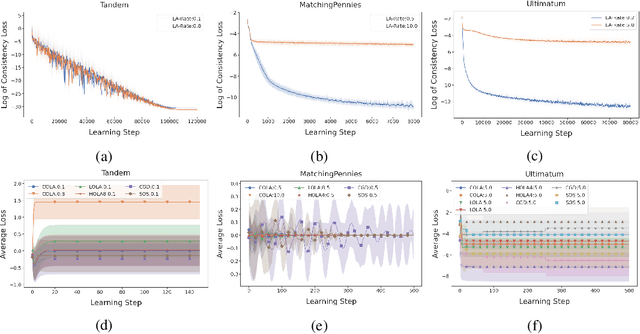


Abstract:Learning in general-sum games can be unstable and often leads to socially undesirable, Pareto-dominated outcomes. To mitigate this, Learning with Opponent-Learning Awareness (LOLA) introduced opponent shaping to this setting, by accounting for the agent's influence on the anticipated learning steps of other agents. However, the original LOLA formulation (and follow-up work) is inconsistent because LOLA models other agents as naive learners rather than LOLA agents. In previous work, this inconsistency was suggested as a cause of LOLA's failure to preserve stable fixed points (SFPs). First, we formalize consistency and show that higher-order LOLA (HOLA) solves LOLA's inconsistency problem if it converges. Second, we correct a claim made in the literature, by proving that, contrary to Sch\"afer and Anandkumar (2019), Competitive Gradient Descent (CGD) does not recover HOLA as a series expansion. Hence, CGD also does not solve the consistency problem. Third, we propose a new method called Consistent LOLA (COLA), which learns update functions that are consistent under mutual opponent shaping. It requires no more than second-order derivatives and learns consistent update functions even when HOLA fails to converge. However, we also prove that even consistent update functions do not preserve SFPs, contradicting the hypothesis that this shortcoming is caused by LOLA's inconsistency. Finally, in an empirical evaluation on a set of general-sum games, we find that COLA finds prosocial solutions and that it converges under a wider range of learning rates than HOLA and LOLA. We support the latter finding with a theoretical result for a simple game.
Normative Disagreement as a Challenge for Cooperative AI
Nov 27, 2021



Abstract:Cooperation in settings where agents have both common and conflicting interests (mixed-motive environments) has recently received considerable attention in multi-agent learning. However, the mixed-motive environments typically studied have a single cooperative outcome on which all agents can agree. Many real-world multi-agent environments are instead bargaining problems (BPs): they have several Pareto-optimal payoff profiles over which agents have conflicting preferences. We argue that typical cooperation-inducing learning algorithms fail to cooperate in BPs when there is room for normative disagreement resulting in the existence of multiple competing cooperative equilibria, and illustrate this problem empirically. To remedy the issue, we introduce the notion of norm-adaptive policies. Norm-adaptive policies are capable of behaving according to different norms in different circumstances, creating opportunities for resolving normative disagreement. We develop a class of norm-adaptive policies and show in experiments that these significantly increase cooperation. However, norm-adaptiveness cannot address residual bargaining failure arising from a fundamental tradeoff between exploitability and cooperative robustness.
 Add to Chrome
Add to Chrome Add to Firefox
Add to Firefox Add to Edge
Add to Edge